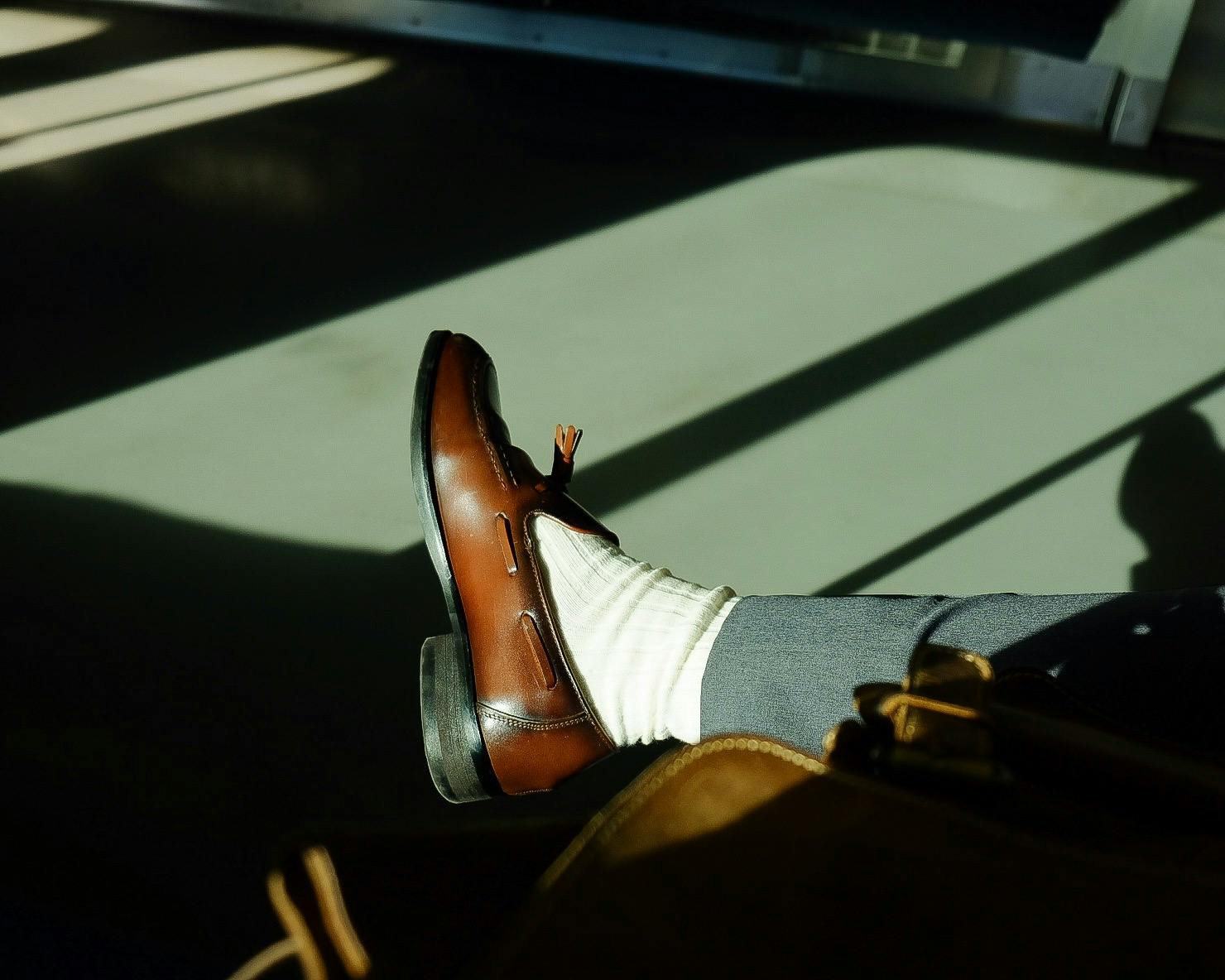How Long Does Toe Numbness Last After Wearing Heels

Wearing high heels can be a great way to look and feel stylish, but it may come with some uncomfortable side effects. One of the most common being toe numbness. Toe numbness after wearing heels can be a very uncomfortable sensation and it can last for quite some time. But how long does toe numbness last after wearing heels? In this article, we will discuss the causes of toe numbness after wearing heels as well as what you can do to get relief from this condition.Toe numbness after wearing heels is most commonly caused by the pressure placed on the nerves in the toes. This pressure can be caused by wearing heels that are too tight or that have a very high heel height. As the heel rubs against the toe, it can cause irritation and inflammation of the nerve, which can lead to numbness. Additionally, constantly walking in heels can cause poor circulation in the feet, which can also lead to numbness.
Reducing Toe Numbness After Wearing Heels
High heels can be fashionable and flattering, but they can also lead to toe numbness and other foot issues. Fortunately, there are some ways to reduce the risk of toe numbness after wearing heels.
Choose Shoes With a Lower Heel Height
Heels come in all shapes and sizes, so it’s important to find the right heel height for you. Generally speaking, a lower heel will put less strain on your feet and reduce the risk of toe numbness. It’s also important to make sure the heel is wide enough not to pinch your toes.
Change Your Shoes Throughout the Day
If you do plan to wear heels for an extended period of time, such as throughout the day at work or at an event, it’s best to change into different shoes that have a lower heel height throughout the day. This will help reduce strain on your feet and decrease your chances of getting toe numbness.
Wear Foot Pads or Insoles
Using foot pads or insoles can help support your feet and cushion them against the hard surface of a heel. These products can be especially helpful if you’re planning to wear heels for an extended period of time. There are many types available on the market in different shapes and sizes, so make sure you find one that fits comfortably in your shoe.
Take Breaks Throughout The Day
If possible, try taking breaks throughout the day when wearing heels. Try sitting down with your feet up while wearing flats or sandals for a few minutes every hour or two if possible. This will give your feet some relief from wearing high heels for an extended period of time and help minimize toe numbness.
Stretch Your Feet Regularly
It’s important to stretch out your feet regularly when wearing high heels in order to relieve any tension that may have built up while wearing them. Try flexing your toes by pulling each one back individually as far as it will go before releasing it back into place – this will help keep them flexible and reduce any potential stiffness that could lead to toe numbness after wearing heels for an extended period of time.
Treating Toe Numbness After Wearing Heels
Wearing heels can cause a variety of issues, including foot, ankle and knee pain, as well as numbness in the toes. The numbness is often caused by the pressure of the shoes on the nerves in the feet. It can be uncomfortable and even painful if it persists for too long. Fortunately, there are a few simple steps you can take to ease the discomfort and treat toe numbness after wearing heels.
The first step is to take off your shoes. Removing your shoes immediately after experiencing toe numbness will help reduce any further compression on the nerves in your feet. If you are able to, sit down with your feet elevated so that blood can flow through them more easily. This will help alleviate any swelling or inflammation that may have occurred while wearing heels.
The next step is to perform some gentle stretches and massage for your feet. Start by lightly stretching your toes and ankles in a circular motion for a few minutes to increase circulation in those areas. Then, use a massage stick or golf ball to massage any sore areas on your feet for about 5 minutes each day. This will help loosen any tight muscles and reduce stiffness in those areas.
Finally, apply an ice pack or cold compress to the affected area for 15-20 minutes at a time several times a day. This will help reduce inflammation and provide relief from any pain or discomfort caused by nerve pressure due to wearing heels. Additionally, consider taking an over-the-counter ibuprofen or other anti-inflammatory medication if necessary.
By following these steps regularly, you should be able to significantly reduce toe numbness after wearing heels and enjoy walking without any discomfort again soon!
Toe Numbness a Common Side Effect of Wearing Heels?
Yes, toe numbness is a common side effect of wearing heels. High heels can cause strain on the toes due to the extra pressure placed on them. This can lead to temporary or even permanent numbness in the toes. Additionally, the angle of the shoe can also lead to increased pressure on the toes, resulting in numbness. The most common areas affected by this are usually around the middle and outer areas of the feet.
It is important to note that toe numbness does not necessarily mean that something serious is wrong. Many people experience toe numbness after wearing high heels due to the extra pressure being placed on them. However, if you experience persistent toe numbness or discomfort, it is important to seek medical advice as soon as possible as this could be a sign of an underlying medical condition.
Wearing high heels can also put a strain on other parts of your body such as your back and ankles. It is important to wear shoes with good support and cushioning to reduce this strain and prevent any further complications such as long-term pain and discomfort. Additionally, it is important to take regular breaks from wearing high heels and give your feet a chance to rest and recover from any soreness or discomfort that may have been caused by wearing them for an extended period of time.
Overall, it is important to remember that toe numbness is a common side effect of wearing heels but should not be ignored if it persists for an extended period of time or becomes more frequent than normal. If you experience persistent toe numbness or discomfort, it is important to seek medical advice as soon as possible in order to rule out any underlying issues that may be causing it.
Toe Numbness After Wearing Heels
Wearing high-heeled shoes can cause numbness and tingling in the toes. This is because when wearing high-heels, the toes are kept in a flexed position for long periods of time, leading to poor circulation and nerve compression. Other symptoms that may be associated with toe numbness after wearing heels include pain, burning sensation, stiffness, and cramping. In some cases, the toes may even become swollen or discolored. If these symptoms persist for more than a few days or worsen over time, it is important to seek medical attention as this could be indicative of a more serious underlying condition. Additionally, it is important to wear appropriate shoes that provide adequate support and cushioning to avoid additional discomfort and pain.

Can Wearing Toe Spacers Help Reduce Numbness After Wearing Heels?
Wearing toe spacers can improve foot alignment and potentially alleviate discomfort caused by high heels. To maximize benefits and reduce numbness, understanding the optimal duration for wearing toe spacers is essential. Regular use may promote circulation and strength, leading to a more comfortable experience in heels over time.
Are There Any Long-term Complications of Toe Numbness After Wearing Heels?
Wearing high heels can cause a range of long-term complications, including numbness in the toes. When you wear heels, the pressure from the shoe compresses the nerves in your feet, causing them to become numb. Over time, this can cause permanent nerve damage and lead to chronic pain. In some cases, it can even affect your balance and mobility.
Numbness in the toes is not a condition that should be taken lightly. If left untreated, it can result in long-term issues such as tingling or burning sensations in the feet as well as increased sensitivity to cold temperatures. It can also cause foot deformities and an inability to properly flex or move your toes.
If you have noticed any signs of toe numbness after wearing heels, it is important that you consult with a doctor or podiatrist right away. They will be able to diagnose the cause of your symptoms and provide appropriate treatment options. Treatment may include wearing shoes with a lower heel height or using orthotics to support your feet and relieve pressure on the nerves. Additionally, they may recommend physical therapy exercises or medications to help reduce pain and inflammation caused by nerve damage.
No matter what treatment options you decide on, it’s important to take measures to protect your feet from future injury or damage when wearing high heels. This includes taking regular breaks from wearing them and opting for shoes with wider toe boxes that won’t squeeze your toes together. Additionally, avoid wearing high heels for extended periods of time and make sure they fit properly so that they don’t pinch or rub against your skin.
By taking these precautions and seeking medical attention if needed, you can minimize any long-term complications caused by toe numbness after wearing heels. It is important to remember that while wearing high heels can be fashionable and stylish, it’s also essential to prioritize comfort and safety for optimal foot health in the long run.
Avoiding Toe Numbness After Wearing Heels
Wearing heels can be a great way to dress up an outfit, but they don’t come without risks. One of the most common issues associated with wearing heels is numbness in the toes, which can cause discomfort and even long-term damage if left untreated. Taking certain precautions can help ensure that you avoid toe numbness after wearing heels.
The first step is to choose the right size of shoe. Make sure that your heel is the correct size for your foot – not too big or too small. Shoes that are too tight may put pressure on your toes and lead to numbness, while shoes that are too big won’t provide enough support and could cause your feet to slip around inside them.
Another important precaution is to give your feet a break from time to time. If you’ve been on your feet for several hours in heels, take a break and switch to flats or sneakers. This will give your feet a chance to rest and recuperate before you put them back in heels again. It’s also important to stay hydrated when wearing heels as dehydration can lead to fatigue and cramping in the lower legs, which can contribute to toe numbness.
If you’re prone to toe numbness after wearing heels, try wearing insoles or cushions in your shoes for extra cushioning and support. There are also special toe caps available that help protect the toes from pressure and reduce friction between the foot and shoe. Finally, make sure you also stretch your feet thoroughly before putting on any type of footwear – this will help keep them flexible and reduce the risk of numbness.
By following these precautions, you can help prevent toe numbness after wearing heels so you can look stylish without compromising your comfort or health!
Can Poorly Fitting Shoes Cause Toe Numbness?
Yes, poorly fitting shoes can cause toe numbness. Wearing shoes that don’t fit properly can cause your toes to become numb, as well as other parts of your foot. This is because the shoes may be too tight, or they may be rubbing against your feet in an uncomfortable way. This can cause the nerves in your feet to become compressed, resulting in a tingling sensation or numbness. The longer you wear poor-fitting shoes, the more likely it is that you will experience some form of toe numbness.
It is important to make sure that you are wearing the correct size and type of shoe for your foot type. If you have wide feet, for instance, it is best to buy shoes specifically designed for wide feet. If you have narrow feet, then opt for narrower shoes. It is also important to ensure that your toes have enough wiggle room in the shoe – if they feel cramped or compressed when wearing it then this could lead to toe numbness over time.
Finally, it is important to take regular breaks from wearing any type of shoe and give your feet some time to rest and breathe. This will help prevent any long-term damage from poorly fitting shoes and will reduce the risk of experiencing toe numbness or other foot issues caused by footwear that doesn’t fit correctly.

Conclusion
Toe numbness can be a common issue for those who wear heels. Depending on the type of shoes and the activity level while wearing them, toe numbness can last anywhere from a few minutes to hours after taking off the shoes. Resting the feet and sitting with legs elevated may help alleviate numbness and decrease its duration. If numbness persists for more than several hours, it is important to seek medical advice as it could be a sign of an underlying medical condition.
In summary, toe numbness after wearing heels can range in duration from minutes to hours. It is important to take care of feet when wearing high-heeled shoes by giving them adequate rest between activities and avoiding prolonged periods of standing or walking in heels. Additionally, if symptoms persist for more than several hours, it is best to seek medical advice.
